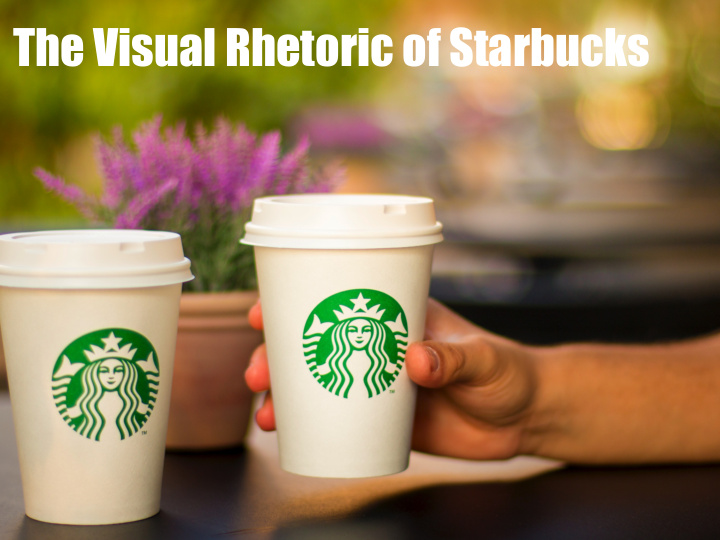



The Visual Rhetoric of Starbucks
Matches the Product From co ff ee, tea and spices to food and more è
Logo Development
Use of Color Logo #1—Color Logo #1—Color Brown Signi fj es: • Co ff ee • Tea • Spices
Use of Color Logo #2-#4—Color Logo #2-#4—Color Green Signi fj es: • Wealth • Status • Health • Now serving food
Where did the Text Go?
Where did the Text Go? Used to be a signi sed to be a signi fj fj er er Minimalist design trends
How the Visuals Change to fit Audience Exigencies
Evolution of the Audience 1970s 1970s: local audience, not nationally known 1987 1987: growing in popularity, starts to serve food 1992 1992: expands to global markets, nationally known brand 2011 2011: company is known worldwide
Evolution of the Logo Ti e exigencies of the company shape logo design Figure One: T e original Starbucks logo Figure Two: Starbucks ’ second logo, Figure three: Starbucks ’ third logo. Mir- Figure four: Starbucks ’ fourth and most created in 1971 uses textual signi fj ers like released in 1987, followed the company ’ s rored their expansion to global markets in contemporary logo. Removes all text and co fg ee, tea, and spices, to aid in audience move to serve food items. Ti e association 1992. Used a simpler, closer image of the black coloring. Aligns with minimalist understanding of the brand. T is logo also between the color brown and food was siren and removed notches from her fj ns, trend and is still e fg ective as audience utilizes a detailed siren to illustrate the unappetizing to designers, so they decided to create a more cohesive and easier to knows the logo represents the company, mythology to customers. to go with green—the color of money. understand message. even without the textual signi fj ers.
Recommend
More recommend